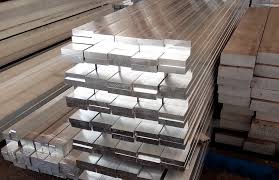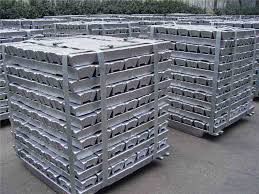How Much Does a Pound? Updated Scrap Prices & Smart Selling Tips (2025)
Recycling aluminum isn’t just good for the planet—it’s also a smart way to make quick cash from what most people throw away. From empty soda cans to old window frames, aluminum is one of the most valuable metals you can recycle. But before you load up your scrap and head to the local yard, it’s essential to know how much aluminum is a pound today—and what factors influence that price.
Aluminum prices aren’t static; they change daily based on global market trends, demand in the manufacturing industry, and regional scrap yard rates. Even the purity and form of your aluminum—like cans, sheets, or wires can make a big difference in what you earn. Staying informed about current prices ensures you never settle for less than what your scrap is worth.
If you’ve ever wondered “Is aluminum worth recycling?” or “How can I get the best price per pound?”, this guide will break it all down for you. You’ll learn the latest market rates, insider tips to boost your scrap value, and practical ways to turn your everyday aluminum waste into steady profit.
Let’s explore how much aluminum is worth per pound today—and how you can make the most out of every piece you recycle.

What Determines the Price of Aluminum?
If you’ve ever taken aluminum cans or scrap metal to a recycling yard, you’ve probably noticed that prices fluctuate almost every week. That’s because aluminum prices per pound depend on several factors—from global market shifts to the type of aluminum you’re selling. Understanding these elements will help you know when and where to sell for the highest return.
a. Market Demand and Supply
Just like gold, aluminum’s value follows the rule of supply and demand. When industries such as construction, automotive, or packaging require more aluminum, the price per pound increases, but when global production ramps up or demand slows down, prices can dip.
For example, if manufacturers are buying more aluminum to produce cars or beverage cans, recycling centers will pay more to keep up with the market demand. Following industry news or checking the London Metal Exchange (LME) can help you track price movements and decide the best time to sell.
b. Type of Aluminum
Not all aluminum is created equal. The form and condition of the metal determine its recycling value. Here’s a quick breakdown:
Aluminum cans – These are among the most common and easiest to recycle. They offer decent rates, especially when clean and crushed.
Aluminum sheets – Found in window frames or siding, these tend to fetch higher prices due to their larger size and purity.
Aluminum wire or cable – The value depends on insulation and purity. Bare, clean wire pays much more than insulated or mixed varieties.
Dirty or mixed aluminum – If your aluminum is combined with other materials like steel or paint, expect lower rates since it takes more effort to clean and process.
Sorting your metals into categories before recycling ensures you don’t lose money to “mixed” pricing.
c. Regional Scrap Yard Differences
Location plays a big role in aluminum pricing. Scrap yards in busy industrial cities often pay slightly higher rates than those in rural areas because they have easier access to recycling plants and metal buyers.
If you live in a smaller town, compare a few nearby yards before selling. Sometimes a short drive can mean the difference between $0.20 and $0.50 extra per pound—especially if you’re selling in bulk. Always call ahead or check websites that list local aluminum prices per pound to make sure you’re getting a fair deal.
d. Metal Purity and Global Trends
The cleaner your aluminum, the more it’s worth. Aluminum mixed with plastic, steel, or paint takes more processing to separate, which reduces the payout. Clean aluminum—often called “bare bright”—can fetch premium prices because it’s ready to be melted and reused.
Global trends also play a huge part. Political tensions, shipping delays, energy costs, and environmental regulations all influence aluminum prices. For instance, if China or the U.S. reduces production or increases import taxes, the supply chain tightens, and prices can spike almost overnight.
Keeping an eye on these factors helps you decide whether to hold your scrap for better rates or sell when the market’s high.

Current Aluminum Prices per Pound
Knowing how much aluminum is in a pound today can help you estimate potential profits and plan recycling trips more efficiently. Prices vary depending on your location, the aluminum grade, and whether it’s clean or dirty.
a. Average Aluminum Prices (U.S. 2025 Update)
As of 2025, the average aluminum price per pound in the U.S. typically ranges between $0.40 $1.10, depending on the metal type and purity. Clean aluminum cans often go for around $0.50–$0.70 per pound, while mixed or painted aluminum might drop to $0.25–$0.40.
Industrial-grade scrap, like extruded aluminum or sheets, can reach up to $1.00 or more per pound if properly separated and cleaned.
Keep in mind—these are average national estimates. The exact amount you’ll get depends heavily on local market conditions and the scrap yard’s pricing policy.
b. Clean vs. Dirty Aluminum Rates
Clean aluminum is more profitable because it requires minimal processing. If you take the time to remove screws, insulation, or debris, you can often double your payout compared to mixed aluminum.
For example:
Clean aluminum cans → $0.60–$0.70 per lb
Dirty aluminum cans (with residue or labels) → $0.35–$0.45 per lb
Extruded aluminum (clean) → $0.90–$1.10 per lb
Painted or mixed extrusions → $0.60–$0.80 per lb
Taking just 10–15 minutes to clean your aluminum before selling can translate into a significantly higher profit, especially if you’re recycling large volumes.
c. Location and Yard Variations
Prices can also change based on your region. Aluminum scrap yards on the West Coast or in major industrial zones like Texas, Ohio, or California might pay more due to proximity to smelting facilities.
In contrast, rural or inland areas with higher transport costs may offer slightly lower prices.
To stay competitive, check websites like iScrap App, ScrapMonster, or local yard listings to see real-time aluminum rates. Comparing two or three nearby yards can often lead to a better deal.
A good rule of thumb: always confirm prices before hauling your load—scrap yard rates can change daily, and the last thing you want is to miss a profitable window.
Tips to Maximize Aluminum Scrap Earnings
Now that you know how much aluminum is a pound, it’s time to boost your profits with some practical strategies. Whether you’re a casual recycler or run a small scrap business, these simple habits can make a big difference in your earnings.
a. Separate Clean Aluminum
Scrap yards pay more for sorted, clean metal. Separate aluminum cans, sheets, wires, and extrusions into different bins. Remove any plastic, paint, or steel attachments.
When you bring in a clean, organized load, you make the recycler’s job easier—and they’ll often reward you with a better price per pound.
If you’re dealing with aluminum cans, crush them to save space. Clean, crushed cans are easier to transport and weigh less per unit volume, meaning you can fit more into a single trip.
b. Check Local Scrap Yard Rates Online
Before heading out, always check the latest aluminum scrap prices. Many yards update their websites daily or list current rates on recycling apps.
By staying informed, you can avoid selling when prices are low and instead wait for favorable market conditions. Even a $0.10 per pound difference adds up quickly when you’re selling hundreds of pounds.
You can also sign up for scrap price alerts through apps or newsletters that track metal trends. This gives you real-time notifications when aluminum prices spike.
c. Sell in Bulk for Better Deals
Most scrap yards offer better pricing for bulk loads. If you have only a few cans or a small amount of aluminum, it might not be worth the trip. However, if you collect over 50–100 pounds, you can negotiate a better rate.
Consider storing your aluminum safely until you accumulate a decent amount—just make sure it’s dry and free from corrosion.
Bulk selling also saves fuel and time. Plus, some yards may offer pickup services for large loads, which can further cut costs and boost profits.
d. Stay Updated on Market Trends
Like any commodity, aluminum prices are cyclical. Monitoring news on the global aluminum market, energy costs, and production updates can help you predict when prices will rise or fall.
Many seasoned recyclers follow metal exchange charts or join local recycling forums to discuss price changes. The more you understand the market, the better your timing will be—and the more money you’ll make.
e. Build Relationships with Local Scrap Yards
Regular sellers often get preferential treatment. Building trust with your local scrap yard can lead to better rates, faster payments, and useful recycling advice.
When you become a familiar face, some yards may even call you when they expect rate increases—helping you sell at the perfect time.

FAQS
How much is aluminum worth per pound today?
As of 2025, aluminum prices in the U.S. typically range between $0.40 $1.10 per pound, depending on the type and purity of the metal. Clean aluminum cans or extrusions earn higher rates, while mixed or dirty aluminum sells for less. It’s best to check your local scrap yard’s updated price list before selling, since prices change daily.
Why do aluminum prices change so often?
Aluminum is a globally traded commodity, and its price fluctuates based on market demand, energy costs, supply chain issues, and manufacturing trends. When demand from industries like automotive or construction rises, prices go up. Conversely, when supply is high or production costs fall, rates drop. Following market updates helps you choose the right time to sell.
What types of aluminum are most valuable?
Generally, clean and pure aluminum brings the highest return. Examples include:
Extruded aluminum (like window frames)
Clean aluminum wire
Aluminum sheets or plates
Aluminum cans (clean and crushed)
Avoid bringing in aluminum mixed with other metals, paint, or plastic—these are labeled “dirty aluminum” and fetch much lower prices.
Conclusion
Understanding how much aluminum is in a pound is the first step toward turning your everyday scrap into a consistent income. Prices may fluctuate, but by keeping your aluminum clean, comparing local rates, and following market trends, you can ensure you always get top dollar for your efforts.
Whether you’re cleaning out your garage or running a small recycling operation, smart selling and timing can help you make the most out of every pound of aluminum you collect.
Start today—sort your aluminum, check current prices, and turn what might look like junk into real profit.
